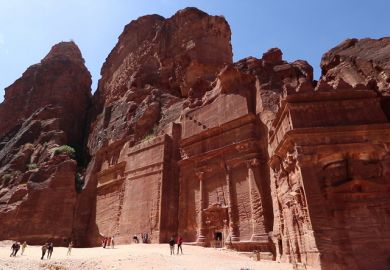When is a dictionary not a dictionary? The answer appears to lie in the publisher's marketing strategy. The Penguin Archaeology Guide covers archaeology from Abacus to Zwolen with succinct authority, in an attempt to be "an invaluable tool for professionals, students, and amateur enthusiasts alike". The book owes its core to an earlier "dictionary", published by a different company in 1992. The ever-industrious Paul Bahn then assembled a team of experts from many parts of the world to produce this expanded version of the original dictionary, in an attempt to produce a reference book of international scope, in contrast to the distinctly Eurocentric perspectives of several other archaeological dictionaries. In the process, the "dictionary" became a "guide"; a decision, one suspects, dictated by marketing considerations more than the book's content.
The entries are brief, as in a dictionary, most being no more than a few hundred words long. Occasionally, subjects such as "Britain and Ireland" or "Mesoamerica" receive more extended treatment, to the tune of several thousand words, but the summaries are inevitably cursory. However, the use of capitals to provide cross-references to related or shorter entries amplifies the account.
The subject matter is duly eclectic. Basic methods and theoretical approaches are prominent, often in too brief a compass to be meaningful. For instance, "processual archaeology", astonishingly cross-referenced to "new archaeology", is little more than a list of further cross-references to topics such as "deduction", "deductive-nomological", and so on. You can find definitions, too, for such esoterica as Bantu, a frigidarium or rouletting.
Most entries cover sites, cultures and peoples. Some describe well-known sites such as Cuello or Olduvai Gorge, others introduce locations and peoples of startling obscurity such as Rikhta in Ukraine, or the Picts, Seibal and Seleucids. There are also cursory biographies of well-known deceased archaeologists. The line counts here offer a fascinating chronicle of editorial priorities: Mortimer Wheeler receives 17, Ian Richmond only 4, Louis Leakey, 8, and, in a victory for feminists, Mary Leakey, 14 lines.
In general, the editor and contributors have elected to go for promiscuous breadth rather than narrowly focused depth, so that the book covers some range over subjects rather than offering lengthy analyses of the most important topics. As a result, many entries are superfluous for the average reader, referring to sites obscure even to the specialised user. For instance, few archaeologists, let alone students, will ever want to consult an entry on the Stone Age settlement at Majninskaya in Siberia or the Mechta-el-Abri Capsian site in Algeria.
Is this, then, a dictionary or a guide? Guides are books designed to steer the reader through a narrowing hierarchy of essays and short entries. For example, with the Minoans, in a guide one would start with an extended entry on Minoan civilisation, and then be steered towards a shorter essay on Knossos, with smaller ones on topics such as Gournia and Minoan beliefs. The Penguin Guide does not do this. On the Minoans, we are given 24 lines of general description, then cross-references. There is no mention of the major controversies and issues that surround the Minoans. This entry is not enough to satisfy the casual reader or the paper-writing undergraduate engaged in synthesis. The preface argues that cross-references and maps lead the reader through a maze of entries and make the dictionary into a guide, but this method is insufficient. One looks in vain for the specific editorial philosophy, the hierarchies in the entry, and the gravitas one expects of a fully fledged guide. By any standards, The Penguin Guide is a dictionary.
With this proviso, I should add that the book is about the best archaeological dictionary available in a crowded market. You can look up almost any subject in these pages and receive accurate, if very limited, enlightenment. If you want a definition of breccia or a few moments with the Eibian culture of East Africa (which was a new one to me, even as a former African specialist), then this is the book for you. But you will not obtain much more than a brief definition. Indeed, I already find myself consulting the book to find out what something is, but not why it is important. It does little more than identify, and certainly does not offer an authoritative, guiding hand through the world of the past. If you want a guide, there is richer fare in the market. Caveat emptor .
Brian Fagan is professor of anthropology, University of California, Santa Barbara, US, and the author of numerous books on archaeology.
The Penguin Archaeology Guide
Editor - Paul Bahn
ISBN - 0 14 051448 1
Publisher - Penguin
Price - £14.99
Pages - 494
Register to continue
Why register?
- Registration is free and only takes a moment
- Once registered, you can read 3 articles a month
- Sign up for our newsletter
Subscribe
Or subscribe for unlimited access to:
- Unlimited access to news, views, insights & reviews
- Digital editions
- Digital access to THE’s university and college rankings analysis
Already registered or a current subscriber? Login



